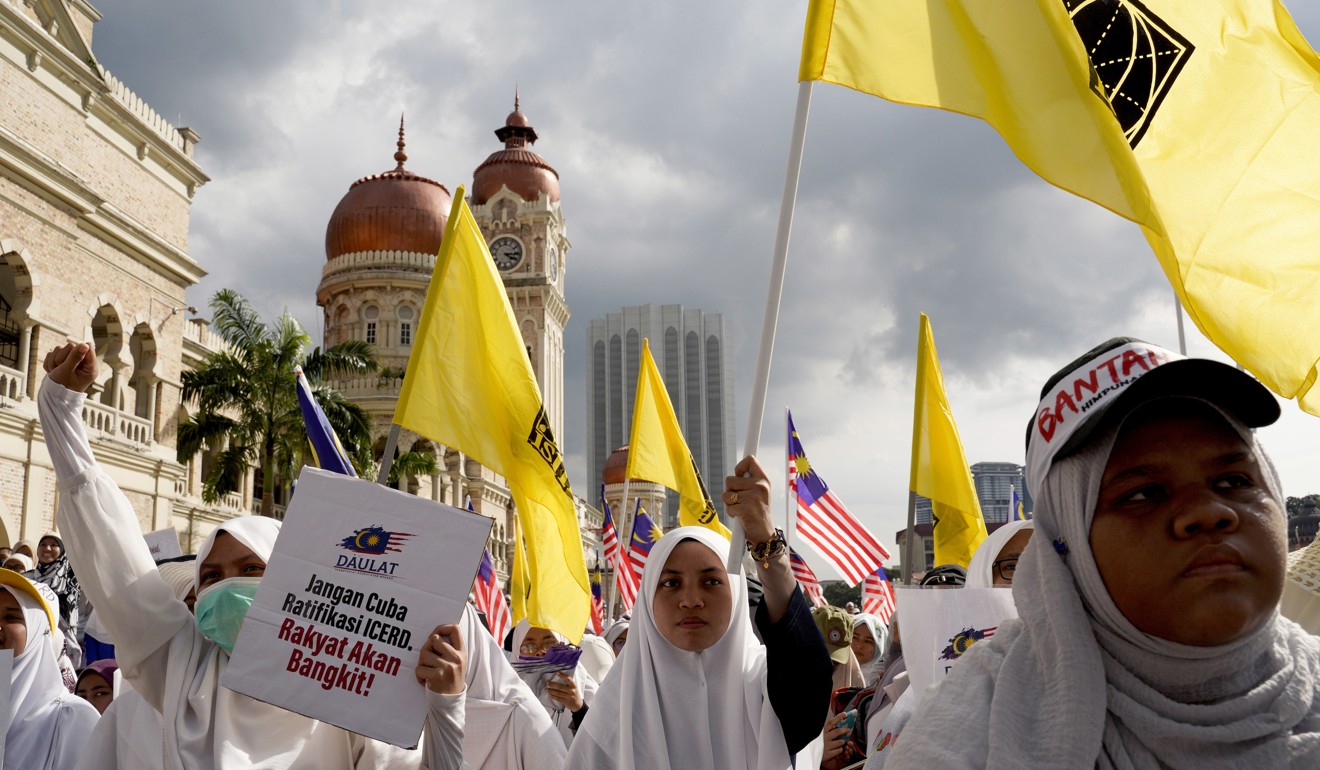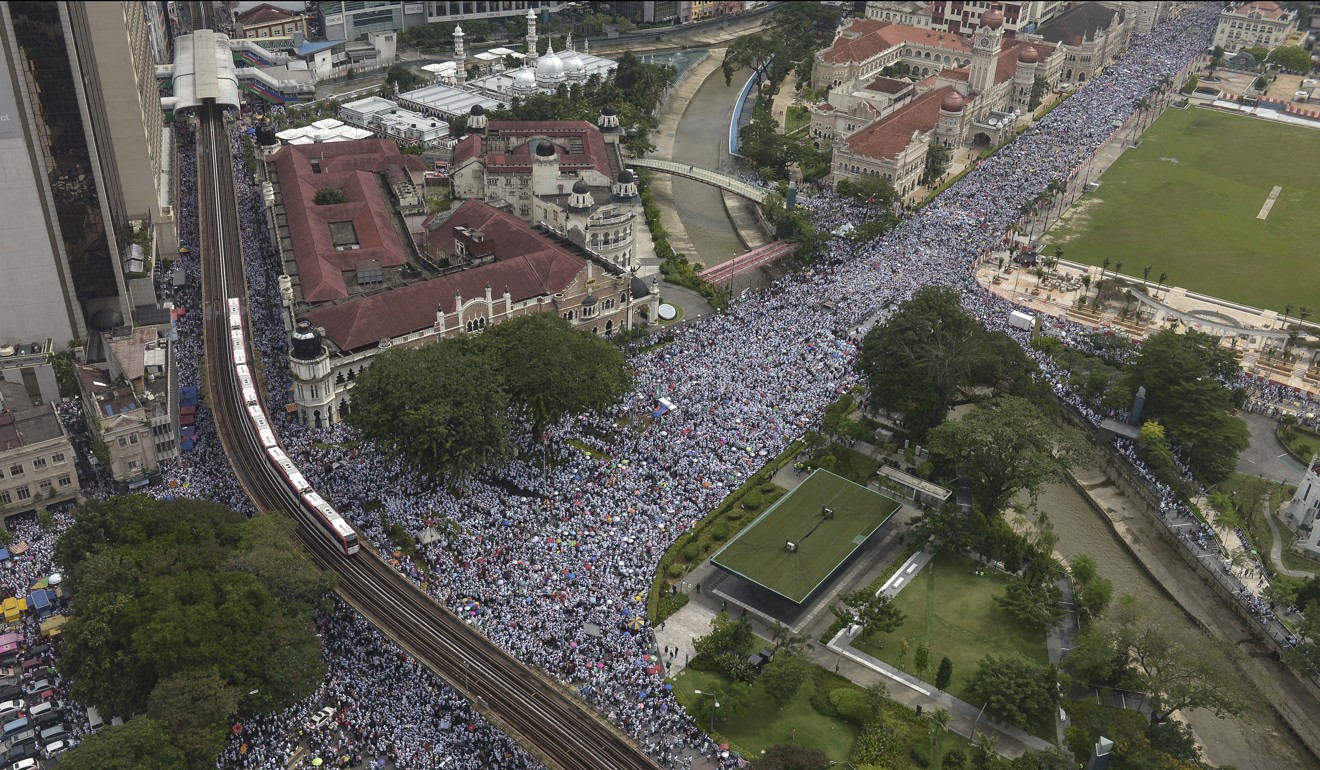
Where’s Malaysia headed with its race-based preferential policies?
- Discriminatory programmes may be an obstacle to self reliance for ethnic Malays, but they are also massive and colossally difficult to dismantle
After taking office last year, Malaysian Prime Minister Mahathir Mohamad’s government undertook a midterm review of the national development plan implemented by the previous administration.
One of the most anticipated elements of Pakatan Harapan’s review of the 11th Malaysia plan – which is set to run until 2020 – was the country’s stance on its extensive, embedded system of racial preferences.

The absence of a dominant party for ethnic Malays in the new coalition government, coupled with the meteoric rise of racially mixed parties, has induced expectations of a matching policy reset – especially among non-Malays and international watchers. However, shifting away from racial party politics is one thing, phasing out race-based preferential policies is another thing altogether.
Mahathir never promised to eliminate racial preferences. On the contrary, immediately after winning power, he gave assurances that he would safeguard constitutionally enshrined privileges for the bumiputra (sons of the soil), the collective term for Malays and indigenous peoples.
Can a ‘new Malaysia’ emerge while those in power play an old game?
While much public discourse and the media spotlight is fixated on the wealth accumulation and ill-gotten gains of Umno-linked elites, the system also extends benefits down to the masses. Mahathir is surely mindful that the millions of Malay households who benefit from the system – through technical colleges, microfinance, scholarships, university admissions, public sector employment, public procurement and more – will balk at the notion that their preferential access to such opportunities should be curtailed.
These programmes are colossally difficult to modify or dismantle not only because of their magnitude, but also because they are ineffective at cultivating capability and competitiveness among Malays – prerequisites for the community to have the confidence to contemplate their removal. Recent administrations have hinted that they grasp this reality. Mahathir himself recently chastised the community for its lack of self-reliance, echoing his loudest regret when he stepped down as prime minister in 2003.
When it comes to the country’s race-based policies, the rhetoric of reform has occupied the mainstream for the past decade. The previous Barisan Nasional government’s bumiputra transformation programme, incorporated into the 11th Malaysia Plan, outlined new ways to provide education for the disadvantaged and various initiatives for grooming entrepreneurs. But the measures were piecemeal, not systematic.

Mahathir’s midterm review largely stays the course, while making some noteworthy shifts and new commitments that clarify objectives, enhance efficacy and mitigate the pitfalls of race-based preferential policies. But it could have gone much further in advancing a systematic, effective and farsighted reform agenda consistent with the idea of a “new Malaysia”.
First, compared to the 11th Malaysia Plan, the midterm review places more emphasis on bumiputra education and skills development, and on programmes designed to help the poorest 40 per cent of the community access education. This is important because it addresses capability development and promotes the upwards mobility of disadvantaged people. Education is the sphere that provides the greatest scope for shifting away from programmes solely targeted at low-income bumiputra households and towards disadvantaged people of every ethnicity.
Second, the review declares its intention to streamline parts of the fragmented system that deal with implementation, but it omits vital details on which polices will be involved. Educational institutions are conspicuously absent from the proposals.
The goal of inculcating new mindsets – to imbue more confidence and less dependency on government assistance – also seems to elude schools and learning institutions. The review directs its call for more capability enhancement and less dependency on preferential support solely at entrepreneurs, not students.
Anxieties about Mahathir’s ‘new Malaysia’ go deeper than race
Third, it makes rather bold declarations about problems such as repeat beneficiaries, rent-seeking and wasteful abuses – especially the use of political links to get contracts of work that are then outsourced. The review calls for data on bumiputra businesses, contracts, licences and special opportunities received to be centralised and properly managed so that progress can be monitored and hoarding mitigated. It also strikingly avows to take “appropriate action, including automatic termination, if contracts or approved permits awarded are sold or transferred to a third party”. These pronouncements are welcome. Beyond redressing such abuses, however, it is unclear whether and how the government plans to leverage public procurement and licensing so that the capabilities and self-reliance of bumiputra can develop.
Fourth, on effective ownership and wealth accumulation, the review instructs state enterprises to cultivate suppliers and vendors and to facilitate effective ownership, including through management buyouts. The Malaysian project of grooming dynamic, competitive and resilient enterprises has passed through many phases. This agenda centred on state-owned enterprises in the 1970s, heavy industries in the 1980s, then turned to privatisation and corporate titans in the 1990s until the 1997-98 Asian financial crisis. Post-crisis, government-linked companies have been the key drivers, supplemented by a raft of new programmes introduced in the past five years that were focused on medium-scale enterprises.

This agenda remains politically indispensable, but in view of its chequered history the government would be wise to proceed with vigour and vigilance. The rhetoric suggests a concern that past errors be averted and a new generation of independent bumiputra entrepreneurs groomed. Recent spates of political appointments to public agencies signal a reluctance to shed naked patronage. That the process involves progress and regress is to be expected, but whether Malaysia takes more steps forwards than backwards remains to be seen.
From the prime minister’s end, a shift in tone and approach – less scolding, more coaching – could also yield productive returns.
Otherwise, at the close of his second tenure Mahathir’s loudest regret will ring out again. ■
Hwok-Aun Lee is Senior Fellow at the Institute of Southeast Asian Studies, Singapore

